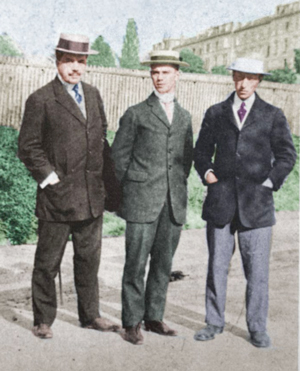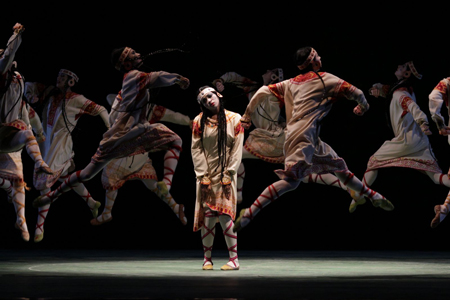by Neil McCalmont
Part of McCalmont’s List Series

Instrumentation: Large orchestra
Era: Early 20th century
Length: c. 35 minutes
Will you recognize it? From Disney’s Fantasia (1940)
Recommended Recordings: Pierre Monteux and the Boston Symphony Orchestra, or Pierre Boulez and The Cleveland Orchestra (1969 recording)
Composer: Igor Stravinsky (1882-1971). Stravinsky was one of the most versatile and influential composers of the 20th century, and many compare his impact on music to Picasso’s on art. Having lived with and studied composition under Nikolai Rimsky-Korsakov until the latter’s death in 1908, Stravinsky rose to fame with his innovative ballets, The Firebird and Petrushka, culminating in the groundbreaking Rite of Spring.
Ever one to push artistic boundaries, Stravinsky adopted and revolutionized many different musical styles throughout his career. He collaborated with such important figures as W. H. Auden and Pablo Picasso, becoming a cultural icon. With his celebrity status, he was also politically opinionated, drawing criticism for his support of Mussolini. Stravinsky’s influence on the arts continues today, and his music remains powerful and popular.
The Piece: The Rite of Spring represents a milestone in Western culture. The ballet was commissioned by Sergei Diaghilev for his company Ballet Russes. It was realized in collaboration with legendary choreographer Vaslav Nijinsky, and painter and philosopher Nicholas Roerich, who designed the scenery and costumes. Their efforts resulted in a notorious premiere: the audience began to riot during the “Augurs of Spring” section, largely a reaction to Nijinsky’s radical choreography, rather than to Stravinsky’s music. The score has since become a core component of the orchestral repertoire.
The work revolves around the power of emerging Spring in pagan Russia. The first section depicts the pagan ceremony for the Earth, while the second plays out the ritual sacrifice of a virgin who dances herself to death. Stravinsky’s radical rhythms, sharp dissonances, wild orchestration, and extreme dynamics make the ballet an incredibly challenging work both for musicians and dancers — and an exciting experience for the listener.
Personal Notes: For some, the work is emotionally disturbing. Through its pagan subject matter, it evokes primitive and powerful instinctual feelings, affecting the deepest levels of the human mind. It’s one of the wildest rides music has to offer, so buckle up!
Fun Facts:
- Stravinsky may have had an affair with fashion icon Coco Chanel, the subject of the novel Coco and Igor and the film Coco Chanel & Igor Stravinsky
- When Stravinsky heard the recording of this work by the New York Philharmonic and Leonard Bernstein, a conductor known for his flamboyancy and passionate readings, he said only, “Wow.”
- One anecdote of the premiere recalls then-elderly composer Camille Saint-Saëns storming out of the hall at the beginning, claiming that Stravinsky had misused the bassoon. This is unlikely: Saint-Saëns did not attend the first performance.
Further Listening:
- Concerto for Orchestra by Béla Bartók
- String Quartet No. 8 by Dmitri Shostakovich
- Petrushka and The Firebird, also by Stravinsky
Published on ClevelandClassical.com August 23, 2016.
Click here for a printable copy of this article





